Smart Vibes
Decoding the Days of the Week
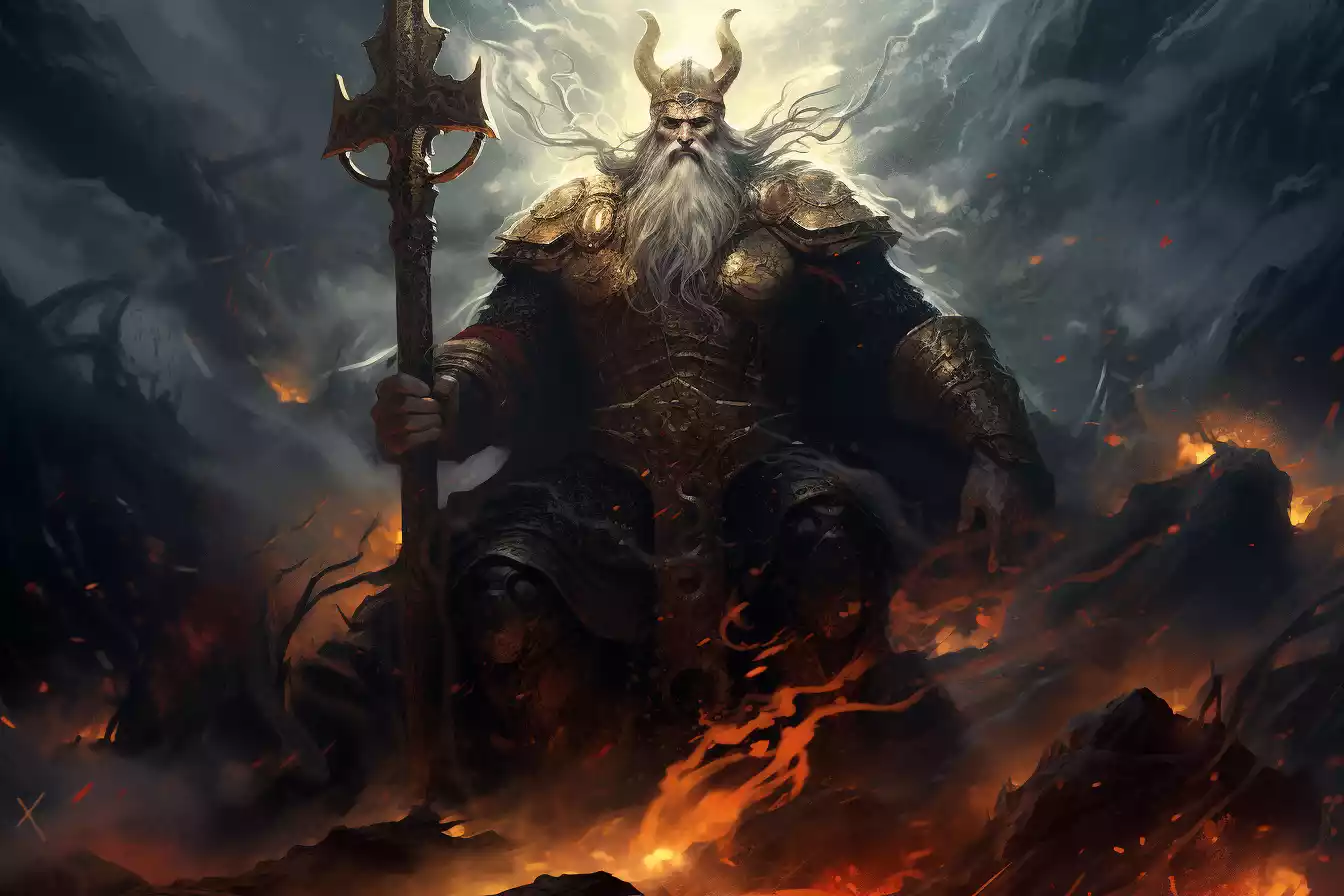
Monday: Moon’s Day
Starting our week with Monday, or should we say, “Moon’s Day”? The name comes from the Old English ‘Monandæg,’ which literally means the moon’s day. This day was dedicated to the worship of the Moon in many ancient cultures. So, the next time you look up at the night sky, remember that Monday’s got a bit of lunar magic in it!
Tuesday: Tyr’s Day
Tuesday might be the day for tacos, but originally, it was all about Tyr, the Norse god of war and sky. The name comes from the Old English ‘Tiwesdæg,’ named after Tyr. He was a pretty big deal in Norse mythology, symbolizing courage and law. So maybe, tackle your Tuesday with a bit of that warrior spirit!
Wednesday: Odin’s Day
Ever struggle to spell Wednesday? Well, it’s worth the hassle because it’s named after Odin, the king of the Norse gods. Known as ‘Wodensdæg’ in Old English, it’s a nod to Odin, who was not just a god of war but also of wisdom and poetry. Talk about a multi-talented deity!
Thursday: Thor’s Day
Thursday is named after none other than Thor, the Norse god of thunder (and yes, the one with that iconic hammer). In Old English, it was called ‘Þūnresdæg,’ which translates to Thor’s day. So next time there’s a thunderstorm on a Thursday, you’ll know whom to thank!
Friday: Freya’s Day
Friday, the day of love and beauty, is named after Freya, the Norse goddess of, well, love and beauty! The Old English name ‘Frīgedæg’ pays homage to this goddess. She’s also associated with fate and prosperity, so let’s hope she brings some good vibes to your Friday plans!
Saturday: Saturn’s Day
Saturday breaks the Norse streak, taking its name from the Roman god Saturn, the god of agriculture and time. The Old English ‘Sæternesdæg’ reflects this origin. It’s interesting how Saturday, now a day for relaxation, was named after a god who symbolized abundance and renewal.
Sunday: Sun’s Day
Ending the week (or starting, depending on how you look at it), Sunday is quite literally the “Sun’s Day.” Derived from the Old English ‘Sunnandæg,’ it was a day to honor the sun. So, whether you’re chilling at home or out with friends, remember that Sunday’s all about that sunshine!
The Norse Influence: Why So Many Norse Gods?
Now, you might be asking, “Why are so many days named after Norse gods?” Great question! The answer lies in the significant influence of Norse culture across Europe. During the Viking Age (around 8th to 11th century), Norsemen, known as Vikings, embarked on extensive raids and conquests across Europe. Their cultural influence spread far and wide, deeply impacting the languages and traditions of the regions they touched.
The Norse legacy is particularly evident in the English language, which absorbed and transformed various Norse terms, including the names of the days. The adoption of these names reflects not just linguistic changes but also the blending of cultures and beliefs over time. The Vikings may have been fierce warriors, but their cultural imprint was equally powerful, leaving a legacy that we still see and use in our everyday lives! You might not think about it, but a LOT of words we use today in English are courtesy those wacky vikings.
There you have it! A little sprinkle of history to jazz up your week. Who knew that the days we sometimes mindlessly flip through have such rich stories behind them? So, next time you plan your week, remember the myths and legends that each day carries. Stay curious and keep exploring, because there’s always something new to learn, even in the most everyday things!
Smart Vibes
Coffee Crash Course

Hey coffee lovers! 👋 Are you ready to become a java genius?
Whether you’re a seasoned sipper or new to the game, this is your go-to guide for all things coffee! From classic blends to caffeine content, popular drinks, and a dive into its rich history – we’ve got you covered. So, grab your favorite mug, and let’s get brewing!
Popular Coffee Blends
First up, let’s talk about blends. A coffee blend is a mix of beans from different origins to create a unique flavor. Here are a few popular ones:
- Breakfast Blend: Light and mellow, perfect for your morning cup. It’s a mix of beans from Latin America with a smooth, balanced taste.
- Espresso Blend: Dark and robust, with a kick to keep you going. Often a blend of African and South American beans, giving you that perfect espresso punch.
- French Roast: Bold and smoky, for those who love intensity. This blend undergoes a longer roasting process for a deeper flavor.
- Italian Roast: Similar to the French roast but with a slightly sweeter, lighter touch. Ideal for those afternoon coffee cravings.
- House Blend: Every café has its signature house blend. These are usually well-balanced, medium roasts, great for all coffee drinkers.
Caffeine Content 101
Wondering about caffeine? The rule of thumb is: the darker the roast, the less caffeine. Yep, it’s a bit surprising! Light roasts actually pack more punch in the caffeine department. Here’s why – the longer the beans are roasted, the more caffeine burns off. So, if you’re looking for a morning wake-up call, go for a light roast. If you want flavor over buzz, dark roast is your go-to.
Decoding Coffee Drinks
Now, let’s decode some popular coffee drinks:
- Americano: Espresso with hot water, an elegant simplicity. It’s a great way to enjoy the flavor of espresso, diluted for a milder taste.
- Espresso: Strong, concentrated coffee served in small doses. It’s the heart of many coffee drinks and is often enjoyed on its own for a quick caffeine boost.
- Latte: Espresso with steamed milk, creamy and dreamy. It’s softer and milkier than a cappuccino, perfect for those who enjoy a smoother coffee experience.
- Cappuccino: A latte’s frothier cousin, with more foam. This classic Italian drink is equal parts espresso, steamed milk, and frothed milk.
- Mocha: For the chocolate lovers, it’s a latte with a chocolate twist. Usually topped with whipped cream, it’s a dessert in a cup!
- Flat White: Similar to a latte but with a higher coffee-to-milk ratio. It’s velvety smooth, with a strong coffee flavor that shines through.
- Macchiato: Espresso ‘stained’ with a little milk. It’s for those who want a stronger espresso flavor with just a hint of creaminess.
- Cold Brew: Steeped for hours in cold water, this method gives you a smoother, less acidic brew. It’s a summer favorite, but delicious year-round!
How did Coffee get so popular?
Coffee, the beverage that powers our lives, has a history as rich as its taste. Let’s brew some history!
The Origins: Coffee’s journey began in Ethiopia, where it was discovered by a goat herder named Kaldi. The story goes that Kaldi noticed his goats were unusually energetic after eating berries from a certain tree. Curious, he tried them himself and felt an immediate boost.
Spreading the Beans: From Ethiopia, coffee spread to the Arab world, where it became a staple. By the 15th century, coffee houses, known as qahveh khaneh, sprang up throughout the Middle East, becoming centers of social activity.
Arrival in America: Coffee reached American shores through European settlers in the early 17th century. Initially, it wasn’t as popular as tea. However, the Boston Tea Party of 1773, a revolt against a tea tax, shifted American tastes from tea to coffee.
Early American Coffee: In the early days, coffee was a luxury. Early American settlers obtained coffee through trade with the East Indies and Europe. By the 19th century, advancements in coffee production and transportation made it more accessible and affordable.
Popularity Boom: Coffee’s popularity in the USA skyrocketed during the 19th century. The Civil War played a significant role, as soldiers relied on coffee for energy. Post-war, coffee became a household staple, and the rest, as they say, is history.
From its humble beginnings in Ethiopia to its rise as a cultural icon in America, coffee has indeed come a long way. Every cup we enjoy today is a testament to this incredible journey.
So, to all the young women out there discovering the wonders of coffee, embrace this journey. Let your taste buds explore and your spirits be lifted by this timeless beverage. Who knows, your next cup of coffee could be the start of a new adventure! ☕💕
Smart Vibes
Rave Culture: A Vibrant Journey
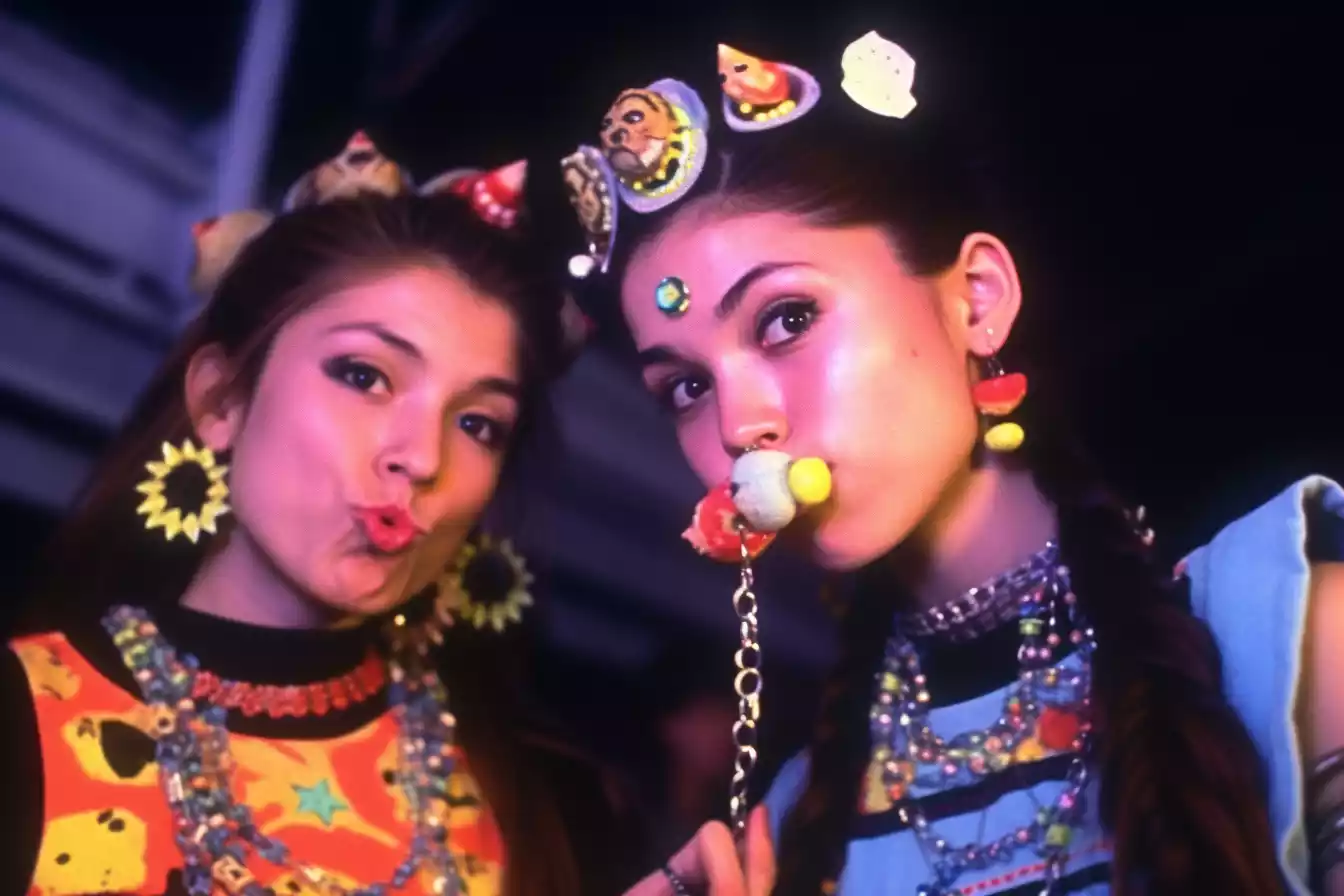
Hey there, lovely readers! Get ready to embark on a dazzling journey through the neon-lit, bass-thumping universe of rave culture. Imagine a world where the night never ends, where the music pulses through your veins, and the air is electric with excitement – welcome to the realm of raves! Born in the euphoric chaos of the 1990s, rave culture was more than just a party scene; it was a revolution. From secret warehouse parties in the UK to the glittering festivals of today, raves have danced their way into the heart of pop culture.
But what’s a rave, you ask? Picture this: a kaleidoscope of laser lights, heart-pounding beats, and a sea of people moving in unison to the rhythm of freedom and rebellion. Raves were the ultimate escape, a place where the misfits and dreamers found their tribe, united by the love of music. It wasn’t just about dancing the night away; it was a lifestyle, a statement, a collective heartbeat of a generation seeking something more.
As we groove through this article, we’ll explore how raves evolved from underground gatherings to global phenomena, bringing with them a wave of change in music, fashion, and culture. So, lace up your dancing shoes, throw on some glitter, and let’s dive into the vibrant history of rave culture. Are you ready to feel the beat?
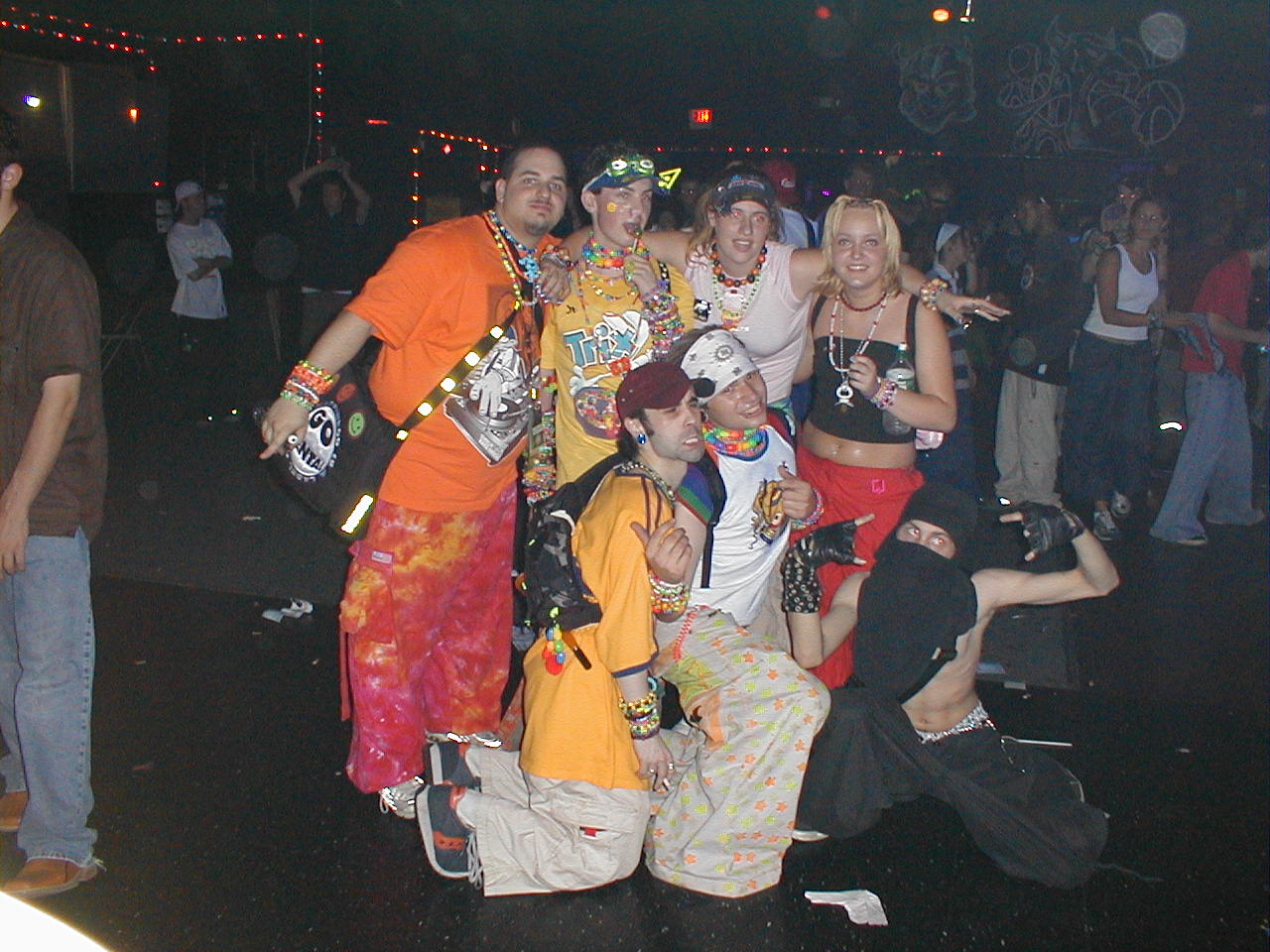
The Birth of Rave Culture
Alright, let’s time-travel back to the 1990s, a time when your mom was probably rocking denim jackets and scrunchies. This era, my friends, was the birth of something epic – the rave culture. It all started in the UK, where underground parties were more than just a weekend thing; they were a revolution. Imagine secret locations, abandoned warehouses, and music that made your heart race faster than your crush’s text!
In these hidden gems, DJs were like wizards, casting spells with hypnotic beats. The UK rave scene was a cocktail of techno, house, and hardcore music, creating a euphoria that was, well, addictive. It wasn’t just about the music; it was a movement. A movement of freedom, self-expression, and, let’s be honest, a bit of rebellion. Rave culture was the voice of the youth, a loud, thumping voice that said, “We’re here to dance and nobody’s going to stop us!”
Now, let’s hop across the pond to North America. Canada and the USA caught the rave bug, and boy, did it spread like wildfire. Cities like Toronto and New York became the playgrounds for the rave scene. The American twist? More lights, more spectacle, and an energy that could light up the sky. The US raves were like the big, bold cousin of the UK scene – same heart, but with an extra dash of glitz.
But here’s the deal – these parties were not your typical Friday night at the club. We’re talking about secret locations only revealed last minute, creating a sense of mystery and adventure. It was like being part of a secret society where the password was your love for beats. And let’s not forget the fashion – neon, glitter, and everything that screams “I’m here to shine.” The rave outfits were as much a statement as the music, a kaleidoscope of self-expression.
From the underground beats of the UK to the dazzling lights of the USA, rave culture started as a whisper in the night that grew into a roaring chant of freedom, music, and unity. Stay tuned as we dive deeper into this electrifying world in the next sections!
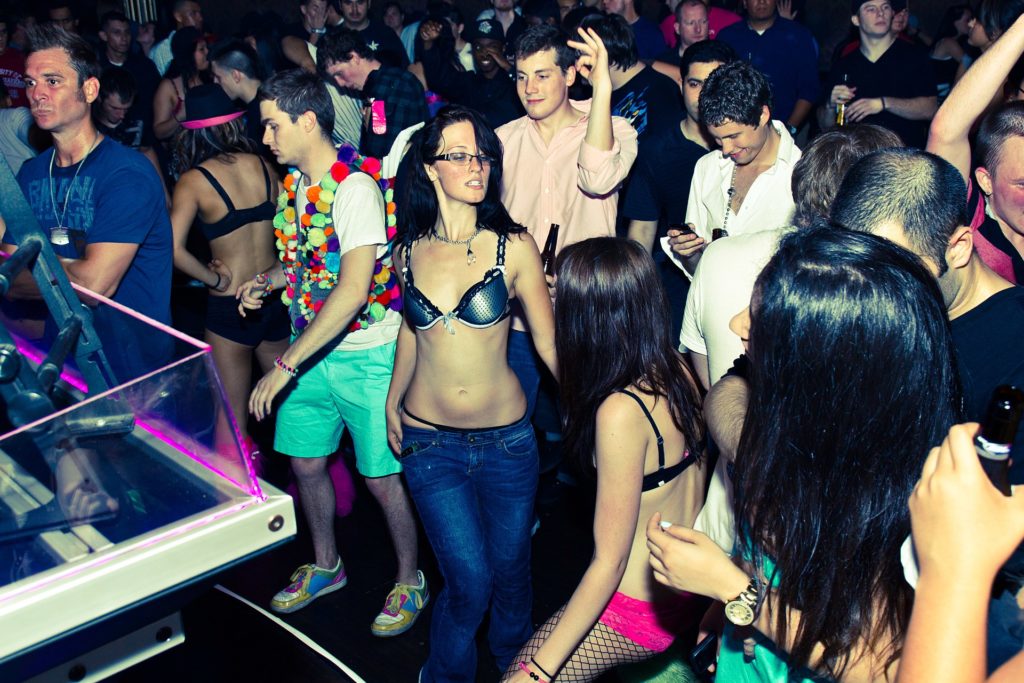
The Underground Era
Welcome back, rave enthusiasts! Ready to dive deeper? Let’s plunge into the heart of rave culture – the underground era. This was a time of secret handshakes, covert locations, and the thrill of the forbidden. It’s the ’90s, no GPS, just word-of-mouth and a sense of adventure leading you to the most epic parties of your life.
Picture this: you’re decked out in your rave best, following a trail of rumors to an undisclosed location. It’s like a treasure hunt, but instead of gold, the prize is a night of unadulterated freedom. These secret raves were held in abandoned warehouses, secluded fields, anywhere off the grid. Why? Because rave culture was not just about breaking a sweat on the dance floor; it was about breaking the rules.
The underground era was a rebellion against the mainstream, a middle finger to the predictable and mundane. It was a space where you could be unapologetically you, where the music was loud, and the societal norms were muted. DJs were the unsung heroes, dropping beats that resonated with the soul of a generation looking for an escape from the cookie-cutter life.
Now, let’s talk fashion – because what’s a rave without its iconic style, right? Think bright, think bold, think everything society told you not to wear. Neon colors, baggy pants, and those adorable little pacifiers – it was a look that screamed, “I’m here to party and I don’t care what you think!”
But it wasn’t all just fun and games. The underground era had its share of challenges. With the rave scene came the scrutiny, the stigma, and the stereotypes. Raves were often branded as illicit, and the rave-goers? Misunderstood rebels. Yet, this only fueled the fire, making each rave a statement, a stand against the conventional.
So there you have it – the underground era, a time of secret raves, rebellious fashion, and a sense of belonging that couldn’t be found anywhere else. It was the heartbeat of rave culture, a beat that continues to echo through the ages. Stick around as we keep grooving through the history of raves – you won’t want to miss what’s next!
Hey, party people! Are you ready to ride the rave wave from the underground to the unforgettable? Let’s hit the play button on the story of how rave culture boomed in the USA. Picture it: the ’90s, a decade where everything was bolder, brighter, and a bit more rebellious. And right in the middle of it all? The rise of the American rave scene.
So, what happened when the UK’s underground rave culture hopped across the pond to the US? It exploded into a kaleidoscope of colors, sounds, and experiences. From the bustling streets of New York to the sunny shores of California, raves were popping up like wildflowers, each with its unique American twist.
In cities like Los Angeles and Chicago, raves were no longer just hidden in warehouses; they were taking over beaches, parks, and even deserts. Imagine dancing under the stars in the middle of nowhere, your body moving to the beat, surrounded by nothing but music and the vast, open sky. It was more than a party; it was a journey, an adventure, a new way of experiencing music and community.
But it wasn’t just about the locations. The music evolved too. American DJs started blending different genres, creating a fusion of sounds that was as diverse as America itself. From techno to breakbeat to house, the music was a melting pot of creativity, reflecting the bold, inclusive spirit of the rave culture.
And let’s talk style, because the rave fashion scene in the USA? Iconic. It was a time of self-expression, where you could be as outrageous or as minimalist as you wanted. Neon colors, fluffy boots, and those adorable candy bracelets that were a rave essential. It was a fashion statement that said, “I’m here, I’m free, and I’m ready to dance my heart out.”
But the rise of rave culture in the USA wasn’t just about partying. It was a movement, a community of like-minded souls coming together to celebrate life, music, and freedom. It was a space where you could lose yourself in the music and find a sense of belonging. A place where, for one night, nothing else mattered but the here and now.
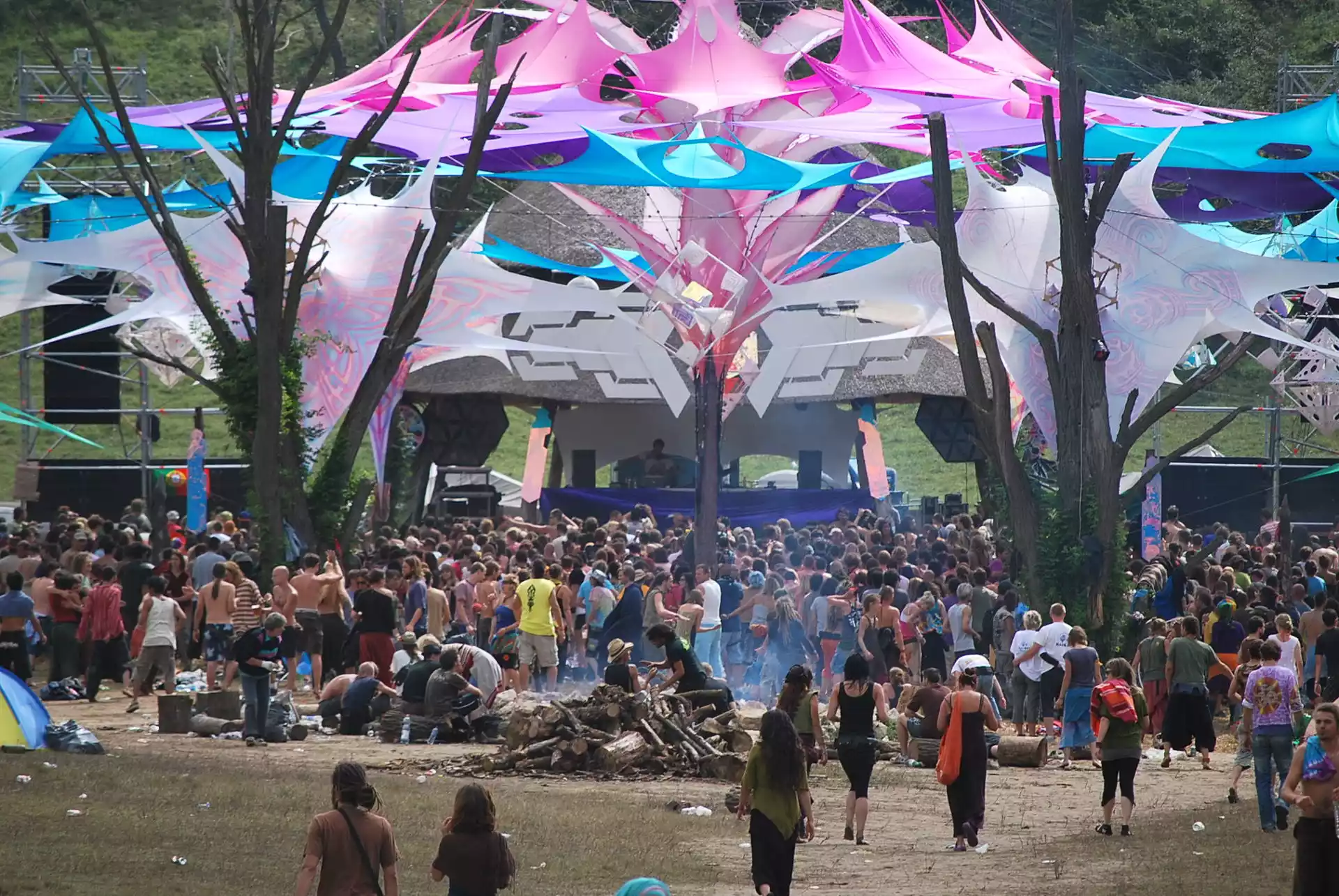
Transition to Mainstream
Hey there, rave enthusiasts! Ready to see how our beloved underground raves turned into the sensational, mainstream phenomenon we know today? Buckle up, because we’re diving into the epic saga of how rave culture went from clandestine night gatherings to headline-stealing, mainstream events.
Let’s rewind to the late ’90s and early 2000s. Rave culture, once a hidden gem, began peeking out from its underground roots. What started in abandoned warehouses and secret outdoor locations was now catching the eye of, well, everyone. Suddenly, raves weren’t just for the night owls and music purists; they became the talk of the town, drawing in crowds from all walks of life.
So, what sparked this shift? One word: music. Electronic music, once the heartbeat of the underground scene, started pulsating through the mainstream music veins. Big-name artists and DJs began experimenting with electronic beats, blending them with pop, hip-hop, and even rock. This fusion created a whole new sound that was irresistible to the masses. Festivals like Electric Daisy Carnival and Ultra Music Festival became household names, turning rave culture into a global sensation.
But with great popularity comes great…commercialization. As raves became more mainstream, they also became more polished – think sponsored stages, VIP sections, and pricey tickets. The raw, anything-goes vibe of the early raves evolved into well-organized, large-scale events. And let’s not forget the fashion evolution – rave wear went from underground cool to high-street chic, with neon and glitter becoming as common at festivals as flower crowns at Coachella.
Yet, amid this glitzy transformation, the spirit of rave culture remained. The sense of community, the love for music, and the freedom to express yourself – these core values continued to beat at the heart of every rave, mainstream or not. Rave culture proved it wasn’t just a passing trend; it was a resilient, evolving movement.
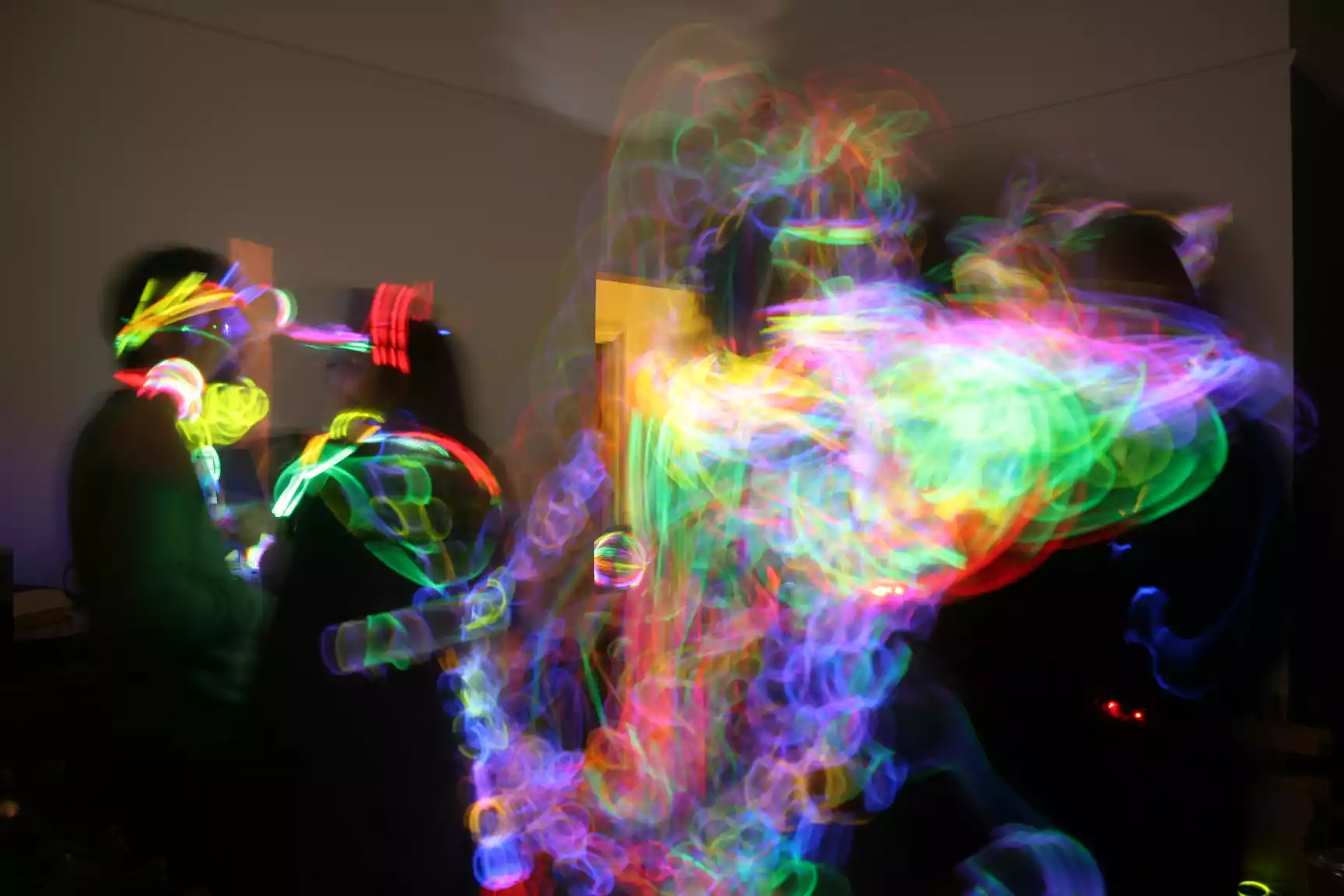
The Drug Subculture
Hey rave queens! As we continue our deep dive into the world of raves, let’s touch on a more sensitive, yet important topic – the drug subculture. It’s no secret that drugs have been a part of the rave scene since its early days. But let’s get real about what this meant for the culture and its people, without any judgment or glamorization.
In the heyday of the underground era, raves were often linked with certain substances. It was part of the scene’s rebellious nature, pushing boundaries not just in music and fashion, but in lifestyle choices as well. For some, it was about enhancing the sensory experience, creating a heightened sense of connection to the music and the crowd. Ecstasy or ‘E’ was by far the most prevalent drug, but there many others, ranging from psychedelics to various uppers — designed to enhance and extend the music and dancing experience. But it wasn’t all rainbows and butterflies – there were risks, and they were real.
As rave culture evolved, so did the conversation around these substances. The initial laissez-faire attitude began to shift towards a more conscious understanding of the risks involved. Harm reduction became a key phrase, with many in the community advocating for safer practices, education, and support systems. It was about looking out for each other, making sure that the party didn’t come at a high cost.
Now, in the era of mainstream raves, the scene has seen a significant change. Yes, the legacy of the drug subculture still lingers, but there’s a stronger emphasis on safety. Festival organizers, health professionals, and the community itself are more proactive in providing information, support, and interventions to ensure that rave-goers have a good time without compromising their well-being.
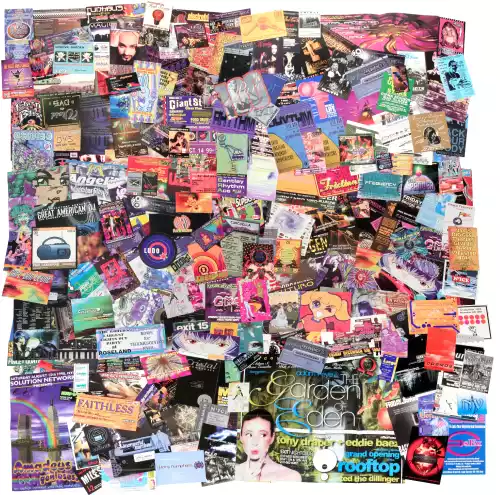
Musical Evolution and Influence
This section is all about the beats, the drops, and the tunes that defined a generation. So, let’s hit play and dive into the musical evolution that has kept our feet moving and hearts racing!
Think back to the early ’90s – a time when the music scene was ripe for revolution. Rave culture brought with it a new sound that would shake the world: electronic dance music (EDM). In those underground parties, genres like techno, house, and trance weren’t just background music; they were the soul of the party. DJs were like musical alchemists, blending beats to create a magical atmosphere where you could lose yourself in the rhythm.
As rave culture spread, so did its musical influence. It wasn’t long before these underground beats began to infiltrate mainstream music. Artists and producers, inspired by the energy of raves, started experimenting with electronic elements, giving birth to new sub-genres. Think big-room house, dubstep, and electro-pop – sounds that you now hear topping the charts and pumping through club speakers worldwide.
But it’s not just about the genres; it’s about the impact. Rave music brought a sense of unity and escapism. It was a universal language that spoke to the hearts of millions, transcending borders and bringing people together. Festivals like Tomorrowland and EDC became global phenomena, celebrating the diversity and creativity of EDM and its power to unite people from all corners of the world.
And let’s not forget the influence on technology and production. Rave culture pushed the boundaries of music production, inspiring innovations in sound engineering and stage design. The result? A multi-sensory experience that goes beyond just listening to music – it’s about feeling it, living it, being part of something bigger than yourself.
So, there you have it – the musical evolution and influence of rave culture. From underground raves to global festivals, from niche genres to chart-topping hits, rave music has left an indelible mark on the world. It’s a story of innovation, unity, and the power of music to bring us together. And that, dear ravers, is a rhythm we can all dance to.
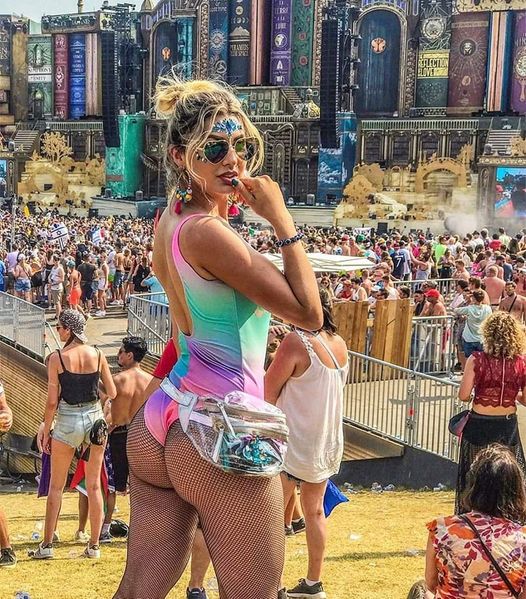
Enduring Rave Influence in Modern Dance Music
Hey, dance music aficionados! Ever wonder how today’s chart-topping bangers owe a nod to the rave culture of yesteryears? Let’s dive into the electric world of modern dance music and uncover the pulsating rave influences that continue to shape the beats we can’t help but groove to!
First off, let’s talk mainstream. Today’s pop scene is like a dazzling mosaic of rave culture. Artists who once ruled the charts with pop ballads are now dropping tracks infused with electronic beats that scream rave vibes. Think about the chart-topping hits that have you tapping your feet – many of them have that unmistakable rave energy, from thumping basslines to synth-heavy choruses.
Take a look at artists like Lady Gaga or Rihanna. Remember when Gaga’s ‘Stupid Love’ made us all feel like we were in a neon-lit, rave-inspired universe? Or how Rihanna’s ‘We Found Love’ had us feeling the euphoria typically reserved for a rave? These tracks aren’t just pop songs; they’re love letters to the rave culture, blending mainstream appeal with underground energy.
But it’s not just pop stars who are keeping the rave spirit alive. The underground scene is thriving too, with DJs and producers experimenting with sounds that push the boundaries of traditional dance music. In hidden clubs and exclusive parties, you’ll find beats that pay homage to the early days of rave culture – raw, unfiltered, and oh-so-addictive.
And let’s not forget the festivals. Today’s mega-events like Ultra Music Festival and Coachella have stages dedicated to EDM, where you can see the direct lineage from those early rave days. The visual spectacles, the communal vibe, the sense of escaping into music – it’s like a modern iteration of the ’90s rave scene, but on a global scale.
The Legacy and Future of Rave Culture
First up, the legacy. Rave culture did more than just give us a reason to party; it changed the music scene forever. It brought electronic dance music from the underground clubs to the top of the charts, influencing artists across all genres. The spirit of rave – with its emphasis on community, inclusivity, and self-expression – has left a mark on not just music, but on fashion, art, and even technology.
And let’s not forget the festivals. Modern music festivals, with their elaborate stages and immersive experiences, owe a lot to rave culture. The whole idea of coming together to celebrate music in a space where you can be your true self? That’s pure rave DNA right there. Rave culture taught us that a party can be more than just a party – it can be a movement.
Now, let’s talk future. As we look ahead, the beat goes on. Rave culture is not stuck in the ’90s – it’s as dynamic as ever. With advances in technology, we’re seeing new ways to experience music. Virtual reality raves, anyone? Imagine slipping on a VR headset and being transported to a rave on the other side of the world. The possibilities are endless.
And with the world becoming more connected, rave culture has the potential to become even more global. We’re talking about a worldwide network of music lovers, sharing beats, trends, and experiences. The future of rave could see a fusion of cultures, sounds, and styles like never before.
So, there you have it – the legacy and future of rave culture. It’s a story of evolution, of a movement that started in the shadows and danced its way into the spotlight. And the best part? This party is far from over. The future of rave culture is bright, bold, and just waiting for us to hit the dance floor.
Conclusion: Rave Culture – Dont’ Stop the Dance
And just like that, our rave-tastic journey comes to an end, but the beat never stops! From the underground warehouses of the ’90s to the dazzling main stages of today, rave culture has been a wild, colorful, and transformative ride. It’s more than just music and late-night dancing; it’s about community, expression, and breaking free from the ordinary.
Rave culture has shown us how music can unite people, transcend boundaries, and create memories that last a lifetime. It’s a culture that continues to evolve, inspire, and excite. Whether you’re a die-hard raver or just love a good beat, there’s no denying the impact rave has had on music, fashion, and even our daily lives.
So, here’s to the ravers, the music makers, and the dreamers. The story of rave is far from over; it’s just getting started. Keep dancing, keep dreaming, and who knows? Maybe we’ll see each other on a dance floor soon!
Smart Vibes
History Break: Napoleon’s Adventures
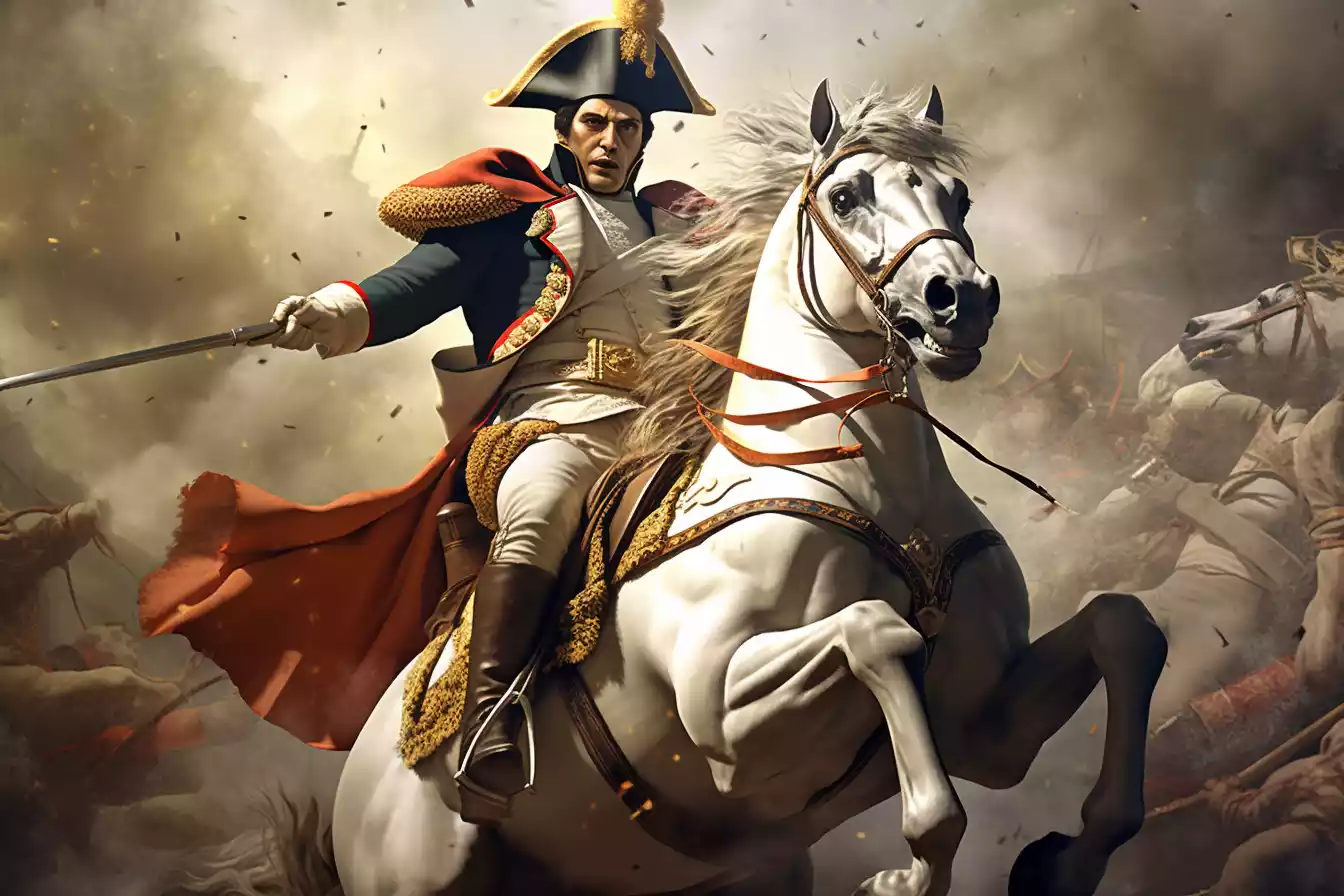
The Early Years: From Corsica to France
Napoleon was born on a small island called Corsica in 1769. Imagine growing up on an island in the Mediterranean – sounds dreamy, right? Well, it wasn’t all sun and sea for young Napoleon. He was sent off to military school in France at just 9 years old. Talk about childhood pressure! But this set the stage for his future military career.
Rising Through the Ranks
By his 20s, Napoleon was making waves in the French military. He was a guy with big ideas and even bigger ambitions. In 1796, he took command of the French army in Italy and crushed it – not literally, but he won a bunch of battles. He had a knack for strategy and a flair for the dramatic, which made him super popular back in France.
Napoleon: The Emperor
In 1804, Napoleon decided he wasn’t just going to be a general; he crowned himself Emperor of France. Yep, you heard that right – he put the crown on his own head. Talk about a power move! As emperor, he reformed everything from the legal system to education. He was all about making France the top dog in Europe.
Battle of Trafalgar: Oops Moment
Every influencer has that ‘oops’ moment, and for Napoleon, it was the Battle of Trafalgar in 1805. His navy got whooped by the British Royal Navy. This was a major setback because it meant he couldn’t invade Britain, a key part of his plan to dominate Europe. Sometimes, even the best-laid plans go awry.
The Continental System: Europe’s Big Timeout
After Trafalgar, Napoleon got a bit salty with Britain. He set up the Continental System in 1806, which was basically a giant timeout for Europe. He told European countries not to trade with Britain. Spoiler alert: it didn’t work out super well. It hurt European economies and made a lot of people unhappy with him.
The Russian Campaign: A Big Misstep
In 1812, Napoleon decided to invade Russia – because why not, right? Big mistake. The Russian winter was brutal, and his army wasn’t ready for it. They say his army started with 600,000 men, but only about 100,000 came back. It was a disaster and marked the beginning of the end for Napoleon.
Exile to Elba: Island Time
After a series of losses, Napoleon was exiled to Elba, a tiny island in the Mediterranean, in 1814. Think of it as a forced vacation, but with less beach time and more brooding. But Napoleon wasn’t one to sit still. He escaped Elba in 1815 and returned to France for a brief period known as the Hundred Days.
Waterloo: The Final Showdown
The Battle of Waterloo in 1815 was like the season finale of Napoleon’s career. He faced off against British and Prussian armies, and, spoiler, he lost. This defeat marked the end of his reign and the beginning of a new era in Europe.
St. Helena: The Last Chapter
After Waterloo, Napoleon was exiled again, this time to St. Helena, a remote island in the South Atlantic. He spent his last years there, reflecting on his life and writing his memoirs until his death in 1821. It was a quiet end to a life that had been anything but.
Legacy: The Man, The Myth, The Legend
Despite his ups and downs, Napoleon left a lasting impact on Europe and the world. His legal reforms, known as the Napoleonic Code, influenced many countries. He’s remembered as a military genius, a powerful leader, and a complex figure in history.
Wrapping It Up
So, there you have it, the rollercoaster life of Napoleon Bonaparte. From his humble beginnings to his dramatic fall, his story is a reminder that history isn’t just about dates and dusty old books; it’s about real people, with real dreams, and real drama. Who knew history could be this intriguing, right?
-
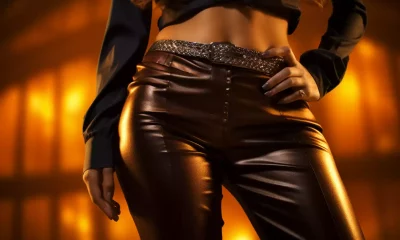
 Fashion2 years ago
Fashion2 years agoShiny Leggings: The Must-Have Accessory for Every Season
-
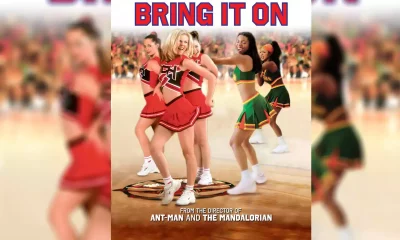
 Entertainment2 years ago
Entertainment2 years agoMovie Review: Bring it On
-

 Health2 years ago
Health2 years ago15 Surprising Health Benefits of Regular Physical Intimacy
-

 Fashion2 years ago
Fashion2 years agoTen Edgy Office Looks 🔥👠
-
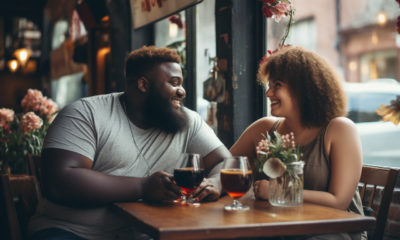
 Relationships2 years ago
Relationships2 years agoPressing Pause: Stopping Physical Intimacy Inside a Relationship 🚫❤️🔥
-
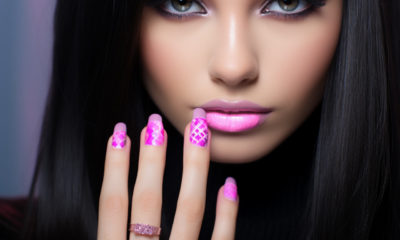
 Beauty2 years ago
Beauty2 years agoGel vs. Acrylic: Which Manicure Type Suits You Best? 💅
-

 Fashion2 years ago
Fashion2 years agoPerfume: A Shy Student’s BFF 🌸
-
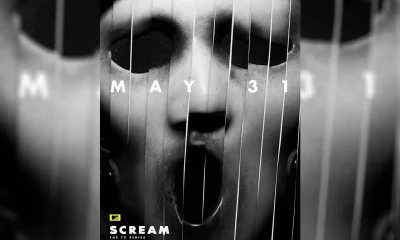
 Entertainment2 years ago
Entertainment2 years ago🔪 Scream: Still a Killer Watch? 👻










